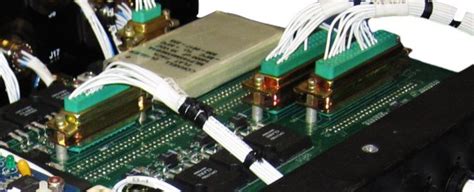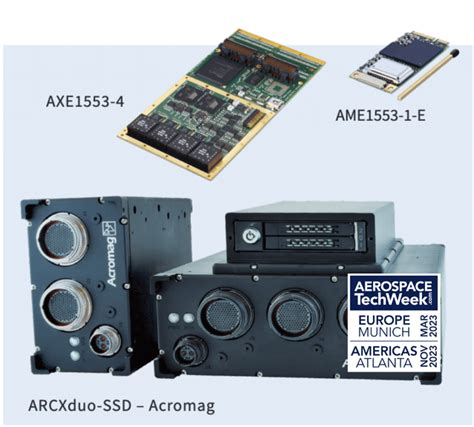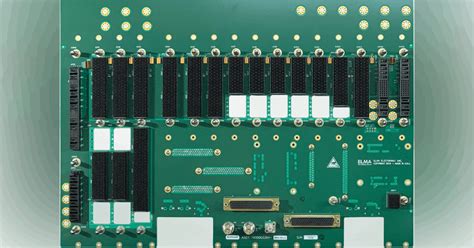Introduction to Embedded Systems in Aerospace
Embedded systems play a crucial role in military and aerospace applications, providing the backbone for various critical functions such as avionics, navigation, communication, and weapon systems. These systems are designed to operate in harsh environments, withstand extreme temperatures, vibrations, and electromagnetic interference while maintaining high levels of reliability and performance.
Key Characteristics of Embedded Systems in Aerospace
-
Reliability: Embedded systems in aerospace must operate reliably in challenging conditions and have fail-safe mechanisms to ensure the safety of personnel and equipment.
-
Real-time performance: Many aerospace applications require real-time processing and response to ensure the timely execution of critical tasks.
-
Ruggedness: Embedded systems must be designed to withstand extreme temperatures, vibrations, shocks, and other environmental factors.
-
Security: With the increasing threat of cyber-attacks, embedded systems in aerospace must have robust security features to protect against unauthorized access and tampering.
-
Size, weight, and power (SWaP) constraints: Aerospace applications often have strict limitations on size, weight, and power consumption, requiring optimized embedded system designs.
Embedded System Design Considerations for Aerospace
Hardware Selection
Choosing the right hardware components is essential for designing reliable and efficient embedded systems for aerospace applications. Some key factors to consider include:
-
Processor architecture: Select a processor with the necessary performance, power efficiency, and features for the specific application. Common choices include ARM, PowerPC, and RISC-V architectures.
-
Memory: Determine the appropriate type and size of memory (e.g., SRAM, DRAM, flash) based on the application requirements and environmental conditions.
-
Interfaces: Identify the required communication interfaces (e.g., CAN, ARINC, MIL-STD-1553) and ensure compatibility with existing systems.
-
Environmental tolerance: Select components that can withstand the expected environmental conditions, such as temperature extremes, vibrations, and radiation.
Software Development
Developing software for embedded systems in aerospace requires a systematic approach to ensure reliability, safety, and security. Key considerations include:
-
Real-time operating systems (RTOS): Choose an RTOS that provides the necessary real-time performance, scheduling, and resource management capabilities for the application.
-
Programming languages: Use programming languages (e.g., C, C++, Ada) and coding standards (e.g., MISRA, DO-178C) that are well-suited for safety-critical applications.
-
Software architecture: Design a modular and scalable software architecture that facilitates maintainability, testability, and upgradability.
-
Verification and validation: Implement rigorous testing and validation processes to ensure the software meets the functional and safety requirements.
Security Considerations
Embedded systems in aerospace are increasingly targeted by cyber-attacks, making security a critical design consideration. Some key aspects to address include:
-
Secure boot: Implement a secure boot process to ensure the integrity of the system software and prevent unauthorized modifications.
-
Secure communication: Use encryption and authentication mechanisms to protect data transmission between embedded systems and external entities.
-
Access control: Implement role-based access control and user authentication to prevent unauthorized access to the system.
-
Secure software updates: Establish a secure process for updating the system software to prevent the introduction of vulnerabilities.
Certification and Compliance
Embedded systems in aerospace must comply with various industry standards and regulations to ensure safety and interoperability. Some key standards include:
- DO-178C: Software Considerations in Airborne Systems and Equipment Certification
- DO-254: Design Assurance Guidance for Airborne Electronic Hardware
- MIL-STD-461: Electromagnetic Interference Characteristics Requirements for Equipment
- MIL-STD-810: Environmental Engineering Considerations and Laboratory Tests

Case Studies
Case Study 1: Avionics Display System
An avionics display system is a critical component in military and commercial aircraft, providing pilots with essential flight information. The embedded system must process and display data from various sensors and subsystems in real-time while ensuring high reliability and readability under varying lighting conditions.
Key design considerations:
- High-performance graphics processing unit (GPU) for rendering complex graphical elements
- Sunlight-readable display with high contrast and wide viewing angles
- Redundant system architecture for increased reliability
- Compliance with DO-178C and DO-254 standards
Case Study 2: Unmanned Aerial Vehicle (UAV) Flight Control System
UAVs rely on embedded flight control systems to perform autonomous navigation, guidance, and control functions. The embedded system must process sensor data, execute control algorithms, and communicate with ground control stations in real-time.
Key design considerations:
- Lightweight and power-efficient processor and sensors
- Real-time operating system with deterministic scheduling
- Secure communication protocols for data transmission
- Modular software architecture for easy integration of new features and capabilities

Emerging Trends in Embedded Systems for Aerospace
Artificial Intelligence and Machine Learning
Artificial intelligence (AI) and machine learning (ML) techniques are increasingly being applied to embedded systems in aerospace for tasks such as autonomous navigation, object detection, and predictive maintenance. Integrating AI/ML capabilities into embedded systems requires careful consideration of processing power, memory, and power consumption.
Edge Computing
Edge computing involves processing data closer to the source, rather than relying on centralized cloud-based processing. In aerospace applications, edge computing can help reduce latency, improve real-time performance, and increase system resilience. Embedded systems designed for edge computing must have sufficient processing power and storage capabilities to handle local data processing.
Wireless Connectivity
Wireless connectivity is becoming more prevalent in aerospace applications, enabling easier integration of embedded systems and reducing the weight and complexity of wiring harnesses. Wireless technologies such as Wi-Fi, Bluetooth, and LoRaWAN are being adapted for use in aerospace environments, requiring careful consideration of security, reliability, and interference mitigation.

Frequently Asked Questions (FAQ)
-
Q: What are the main challenges in designing embedded systems for aerospace applications?
A: The main challenges include ensuring high reliability and real-time performance in harsh environments, meeting strict size, weight, and power constraints, and complying with rigorous industry standards and regulations. -
Q: How can embedded systems in aerospace be protected against cyber-attacks?
A: Embedded systems can be protected by implementing secure boot processes, using encryption and authentication for communication, enforcing access control and user authentication, and establishing secure software update processes. -
Q: What programming languages are commonly used for developing embedded systems in aerospace?
A: Common programming languages for aerospace embedded systems include C, C++, and Ada, which are well-suited for safety-critical applications and have established coding standards (e.g., MISRA, DO-178C). -
Q: How does edge computing benefit embedded systems in aerospace?
A: Edge computing allows embedded systems to process data locally, reducing latency and improving real-time performance. It also increases system resilience by reducing dependence on centralized cloud-based processing. -
Q: What are some key industry standards that embedded systems in aerospace must comply with?
A: Key industry standards include DO-178C for software considerations in airborne systems, DO-254 for design assurance of airborne electronic hardware, MIL-STD-461 for electromagnetic interference requirements, and MIL-STD-810 for environmental engineering considerations and testing.
Conclusion
Designing embedded systems for military and aerospace applications requires a deep understanding of the unique challenges and requirements of these domains. By carefully considering factors such as hardware selection, software development, security, and certification, engineers can create robust and reliable embedded systems that meet the stringent demands of aerospace applications.
As new technologies like artificial intelligence, edge computing, and wireless connectivity continue to evolve, the embedded systems landscape in aerospace will undoubtedly continue to advance. However, the core principles of reliability, safety, and security will remain paramount in ensuring the success of these critical systems.

Leave a Reply